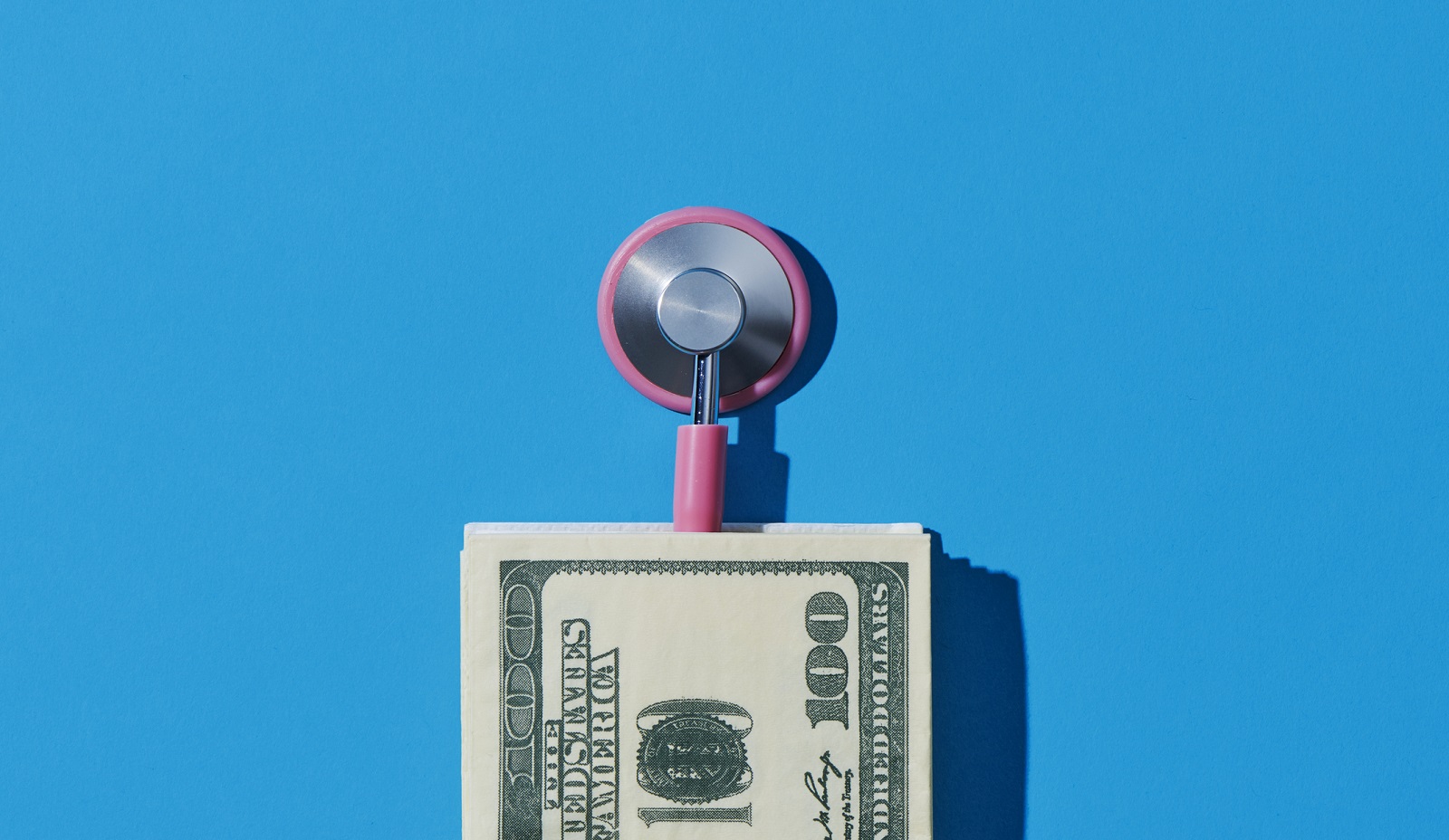Medicare Price Talks Progress As Drug Companies Make Counteroffers
Negotiations over 10 Medicare Part D drugs are slated to end in August, with newly negotiated rates announced in September.

Joey Solitro

Medicare's efforts to get drugmakers to reduce prices of the first 10 Part D drugs selected under the Medicare Drug Price Negotiation Program are progressing.
The 10 drugmakers participating in the talks sent counteroffers to the agency earlier this week, following its initial offer on February 1.
“We are committed to constructive dialogue and are glad the drug companies are coming to the table,” Xavier Becerra, secretary of the Health and Human Services Department, said in a statement. “These are good-faith, up-front negotiations. The Biden-Harris Administration is working to lower costs for families and keep money in the pockets of millions of Americans instead of Big Pharma.”
From just $107.88 $24.99 for Kiplinger Personal Finance
Become a smarter, better informed investor. Subscribe from just $107.88 $24.99, plus get up to 4 Special Issues

Sign up for Kiplinger’s Free Newsletters
Profit and prosper with the best of expert advice on investing, taxes, retirement, personal finance and more - straight to your e-mail.
Profit and prosper with the best of expert advice - straight to your e-mail.
Negotiations are slated to end August 1.The new negotiated prices for the drugs are expected to be announced by September 1, with an effective date of January 2026.
Medicare — the country’s largest prescription drug buyer — intends to choose up to 60 more drugs for the program during the next four years and up to 20 additional drugs per year after that.
Drugmakers participating in the talks are: AstraZeneca AB; Boehringer Ingelheim; Bristol Myers Squibb; Immunex; Janssen Biotech; Janssen Pharmaceuticals; Merck & Co.; Novartis Pharmaceuticals; Novo Nordisk; and Pharmacyclics.
Medicare selected the first 10 drugs for the program last year. The drugs, covered under Part D, are: Eliquis, Jardiance, Xarelto, Januvia, Farxiga, Entresto, Enbrel, Imbruvica, Stelara and Fiasp/NovoLog.
In 2022, about 9 million Medicare beneficiaries were prescribed the drugs selected for this first round of the program. Some of these seniors were paying nearly $6,500 in out-of -pocket costs for just one of the drugs, President Joe Biden said in a February 1 announcement about the progress of negotiations.
In January, drugmakers raised prices on six of the 10 the drugs even after all 10 were priced 3- to 8-times higher in the U.S, than in other countries, the administration said.
Under the program, which is authorized under the Inflation Reduction Act, Medicare has the authority for the first time to directly negotiate prices for certain high-cost, single-source drugs that do not have generic or biosimilar competition.
“This is the first time ever that Medicare is not accepting the drug prices the pharmaceutical companies set,” the administration said.
By contrast, it added, Medicaid, the Department of Defense and the Veterans Health Administration already had the authority to negotiate drug prices and they pay less than Medicare, on average, for top-selling, brand-name drugs.
$79,000 vs. $16,000 for Stelara
Drugmakers, which have filed a total of nine lawsuits attempting to block the Medicare Drug Price Negotiation Program, remain under fire on and off Capitol Hill for charging exorbitantly higher prices in the U.S. than in other countries.
That situation was the focus of a Senate committee hearing last month when executives from Johnson & Johnson, Merck and Bristol Myers Squibb were grilled.
In the U.S., Johnson & Johnson charges $79,000 for arthritis medicine Stelara, while that same product can be purchased for $16,000 in the U.K., Sen. Bernie Sanders (I-VT) said during the hearing.
Bristol Myers Squibb charges U.S. patients $7,100 for blood thinner Eliquis, but sells the same product for $900 in Canada and just $650 in France, he said. Merck charges U.S. diabetes patients $6,900 for Januvia when that same product is only $900 in Canada and $200 in France, he added.
Sanders said that, despite discussions about how divided the nation is over many issues, one matter that people agree on is “the need to substantially lower the outrageously high price of prescription drugs in our country.” He cited an unspecified recent poll showing that 82% of Americans said the cost of prescription drugs is too high, with 73% saying the government is not doing enough to regulate drug prices.
Sanders charged that drugmakers are spending billions of dollars on executive compensation, stock buybacks as well as mergers and acquisitions, and passing the costs onto patients.
"Americans are forced to pay higher and higher prices for the drugs they need to survive," Sanders said. "And let's be clear, the overwhelming beneficiary of these high drug prices is the pharmaceutical industry."
Pricey insulin costs
In a separate announcement on February 1, the Health and Human Services’ (HHS) Office of the Assistant Secretary for Planning and Evaluation (ASPE) issued several reports with cost comparisons of prescription drugs in the U.S. versus those in other Organisation for Economic Co-operation and Development (OECD) countries.
Among ASPE's findings was the fact that U.S. prices for all branded and generic drugs in 2022 were nearly 3 times as high as those in 33 of the OECD countries.
“For every dollar paid in other countries for drugs, consumers in the United States pay $2.78,” according to the report. “The gap is widening over time as U.S. drug prices grow faster than drug prices in other countries and the mix of drugs changes.”
The U.S. gross prices for insulin — which was developed about 100 years ago and costs drugmakers about $10 a vial to produce — were on average nearly 10 times the price in the U.S. than they were in 33 OECD countries as well, said the Biden administration citing the report.
New website for beneficiaries
HHS has launched LowerDrugCosts.gov, a new website for Medicare beneficiaries with information related to the drug pricing provisions of the Inflation Reduction Act as well as resources for Medicare enrollees and other interested parties.
Related Content
Profit and prosper with the best of Kiplinger's advice on investing, taxes, retirement, personal finance and much more. Delivered daily. Enter your email in the box and click Sign Me Up.

Esther D’Amico is Kiplinger’s senior news editor. A long-time antitrust and congressional affairs journalist, Esther has covered a range of beats including infrastructure, climate change and the industrial chemicals sector. She previously served as chief correspondent for a financial news service where she chronicled debates in and out of Congress, the Department of Justice, the Federal Trade Commission and the Commerce Department with a particular focus on large mergers and acquisitions. She holds a bachelor’s degree in journalism and in English.
- Joey SolitroContributor
-
 CD Maturing Soon? Here's What to Do Next
CD Maturing Soon? Here's What to Do NextThese strategies of what to do when you have a CD maturing soon will have you maximizing returns even with rate cuts.
-
 How to Make 2026 Your Best Year Yet for Retirement Savings
How to Make 2026 Your Best Year Yet for Retirement SavingsMake 2026 the year you stop coasting and start supercharging your retirement savings.
-
 You Saved for Retirement: 4 Pressing FAQs Now
You Saved for Retirement: 4 Pressing FAQs NowSaving for retirement is just one step. Now, you have to figure out how to spend and maintain funds. Here are four frequently asked questions at this stage.
-
 Do You Have a CD Maturing Soon? Here's What to Do Next
Do You Have a CD Maturing Soon? Here's What to Do NextThese strategies of what to do when you have a CD maturing soon will have you maximizing returns even with rate cuts.
-
 How to Make 2026 Your Best Year Yet for Retirement Savings
How to Make 2026 Your Best Year Yet for Retirement SavingsMake 2026 the year you stop coasting and start supercharging your retirement savings.
-
 You Saved for Retirement: 4 Pressing FAQs Now
You Saved for Retirement: 4 Pressing FAQs NowSaving for retirement is just one step. Now, you have to figure out how to spend and maintain funds. Here are four frequently asked questions at this stage.
-
 I'm a Financial Planning Pro: This Is How You Can Stop These 5 Risks From Wrecking Your Retirement
I'm a Financial Planning Pro: This Is How You Can Stop These 5 Risks From Wrecking Your RetirementYour retirement could be jeopardized if you ignore the risks you'll face later in life. From inflation to market volatility, here's what to prepare for.
-
 Are You Hesitating to Spend Money You've Spent Years Saving? Here's How to Get Over It, From a Financial Adviser
Are You Hesitating to Spend Money You've Spent Years Saving? Here's How to Get Over It, From a Financial AdviserEven when your financial plan says you're ready for a big move, it's normal to hesitate — but haven't you earned the right to trust your plan (and yourself)?
-
 How to Open and Maintain an Online Savings Account Safely
How to Open and Maintain an Online Savings Account SafelyOnline banks offer generous APYs that most brick-and-mortar banks can't match. If you want to make the switch to online but have been hesitant, I'll show you how to do it safely.
-
 7 Ways to Age Gracefully Like the Best Stock Photo Seniors
7 Ways to Age Gracefully Like the Best Stock Photo SeniorsAs a retirement editor, I've gleaned valuable wisdom (and a lot of laughs) from one older couple that tops the seniors' stock photo charts.
-
 My First $1 Million: Banking Executive, 48, Southeast U.S.
My First $1 Million: Banking Executive, 48, Southeast U.S.Ever wonder how someone who's made a million dollars or more did it? Kiplinger's My First $1 Million series uncovers the answers.